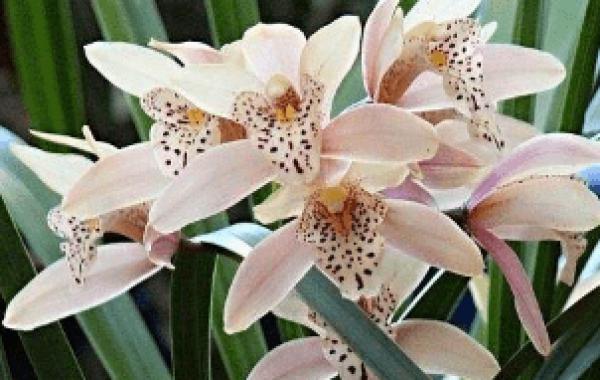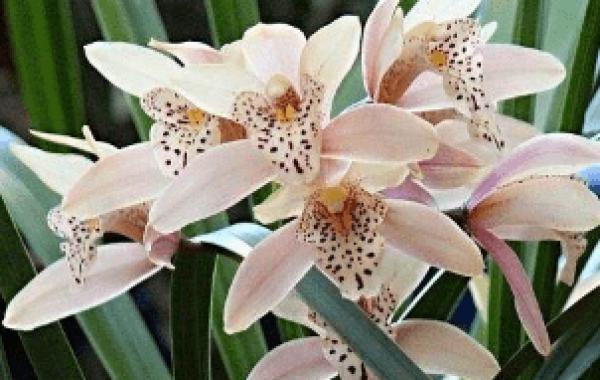How to grow white orchids in the north?
The white orchid is also called Huang Gran, which belongs to the evergreen broad-leaved tree of Magnoliaceae. It is generally planted in subtropical areas and can only be cultivated in pots in the north. But there are many northern flower friends said that the white orchid is not easy to serve, or the whole plant will die, how to grow white orchids in the north.
First, the choice of basin soil
Two points should be paid attention to in choosing the potted soil of white orchids: one is that white orchids are fleshy roots and like the soil with good permeability, and the other is that white orchids belong to southern flowers and like acidic soil. In view of these two points, the author has used two groups of soil for cultivation comparison. The group was cultivated with plain sandy soil commonly used in the north, and the second group was composed of coarse river sand, sandy loam and rotten leaf soil at the ratio of 1 ∶ 1 ∶ 1. It was observed that the growth of the second group was better when the plant condition, water, fertilizer, light and temperature were the same. It should be noted that the soil in the north is alkaline. When mixing cultivated soil, an appropriate amount of ferrous sulfate or sulfur powder should be added to increase the acidity of the soil.
II. Water and fertilizer management
Watering is very important to cultivate white orchids in the north. The essence that the white orchid likes the humid environment is that the air humidity is high but the soil water content can not be too high. According to the author's experience, watering white orchids can be watered once a week in spring, every morning and evening in summer, every 4 to 5 days in autumn, and indoors every 10 days in winter. less or no watering on cloudy or rainy days in summer. Must not make it suffer from rain, if drenched by rain should be timely poured out of the basin water, placed in the shade and ventilation place, the basin soil should also be loosened after slightly dry, in order to facilitate water evaporation. In daily maintenance, it should also be noted that no matter which season, as long as the surrounding temperature is above 10 ℃, leaf water spraying should be carried out. The method is: once every 2 to 3 days in winter, once every day to 2 days in spring and autumn, and once in the morning and afternoon in summer. The water in the north is alkaline, and the soil is easy to be alkalized after long-term use, so Rain Water, snow water or ferrous sulfate are used. But Rain Water and snow water are not easy to retain, usually pour tap water, regularly (every 10 days or so) irrigated ferrous sulfate, will not make the plant yellow disease.
It is necessary to grasp two principles to fertilize white orchids, one is to balance nutrition, and the other is to apply thin fertilizer frequently. Nutritional balance refers to the application of different fertilizers in different periods according to the different needs of plants for fertilizer. if you do not grasp this well, it will not be conducive to plant growth and flowering, such as some flower friends apply nitrogen fertilizer in summer flowering, resulting in excessive growth of plant branches and leaves, lack of phosphorus and it is difficult to form flower buds. Nitrogen fertilizer should be the main fertilizer for white orchid in early spring and phosphorus and potassium fertilizer in summer and autumn. In addition, attention should be paid to the alternating use of organic fertilizer and inorganic fertilizer, or mixed use. Long-term application of inorganic fertilizer is easy to harden the basin soil and affect root respiration. Organic fertilizer can choose sesame sauce dregs, chicken dung, pigeon dung, and horseshoe slices, which are often used as base fertilizer. Frequent application of thin fertilizer means that the amount of fertilizer applied at one time should not be too large, and it should be applied less frequently. According to the author's experience, the dosage of urea and other inorganic fertilizers is 5 to 10 grams at a time, 50 grams of sesame sauce residue, chicken dung and pigeon dung can be applied at a time, and alum fertilizer water and horseshoe water should be diluted in the proportion of 1 ∶ 1 according to the original solution and clear water. It should be mentioned that organic fertilizer must be ripened and fermented before it can be used, and raw fertilizer can easily lead to plant root burning. With regard to the frequency of fertilization, generally speaking, fertilizer is applied once every 15 days in spring and autumn, every 10 days in summer (flowering), and no fertilization is generally applied in late autumn and winter.
Third, light and temperature control
White orchids are not strict with light, but excessive or insufficient light is not conducive to plant growth, too strong light is easy to burn leaves, lack of light is not easy to form flower buds, even if there are flowers are not fragrant. It should be placed in a sunny place in spring, after the Mid-Autumn Festival and in winter to receive light. Summer and early autumn should be placed in a semi-shaded place to cover 50% of the light so that it can receive sunlight before 9 am and after 6 pm, so as to avoid direct noon light.
White orchids like a warm environment and are cultivated in the north. They should leave the shed after Grain Rain's temperature is stable in spring. As long as there is no strong light in summer, the water can keep up, and the white orchid is not afraid of high temperature. Enter the shed in time after the middle of October, because Magnolia can't bear the low temperature below 5 ℃. In winter, the room temperature should be kept between 5 ℃ and 15 ℃. If the temperature is too low, but the temperature is too high, it is not only not conducive to plant dormancy, but also affect flowering in the coming year, but also make plants vulnerable to diseases and insect pests. Some flower friends love flowers eagerly, for fear that the flowers will be frozen to death, put the flowers closer to the heat source, the result is counterproductive, the extracted tender leaves are easy to fall off because of lack of light, water and fertilizer, which not only consumes nutrients, but also can not grow normally. If the indoor temperature can not meet the overwintering requirements, agricultural film can be used to cover the flowerpot to solve the problem, so that the plant overwintering.
IV. Turning and pruning
White orchids generally turn the basin once every 2 years, each time to use a larger basin, turning the basin can be carried out after coming out of the shed in spring. The new basin should be carried out and annealed, and the basin bottom should use broken tiles to make a drainage layer, spread about 3 cm of cultivated soil on the drainage layer, and then put 3 to 4 horseshoe slices as base fertilizer, and then spread a layer of cultivated soil to knock out the plant from the original pot. cut off the dead and rotten roots and put them into the new basin, fill the soil in layers and pour water immediately after pressing.
White orchid sprouting ability is poor, generally do not prune vegetative branches, but it is necessary to cut off dead branches, disease and insect branches. The proper removal of some leaves during the bud period is conducive to the formation of buds, which can make the buds large and the florescence long.
Prevention and control of diseases and insect pests
The common diseases of white orchids are anthracnose, leaf spot and yellowing, and the main insect pests are red spiders, shell insects and aphids. In daily maintenance, in addition to strengthening water and fertilizer management and improving plant disease resistance, attention should also be paid to ventilation. If pests occur, they can be caught manually when the number is small. When the number is large, red spiders can be sprayed with 1000 times of dicofol and 1000 times of omethoate EC can be used to kill shell insects and aphids. Anthracnose and leaf spot can be controlled by chlorothalonil, carbendazim and other broad-spectrum agents. Chlorosis can be prevented and treated by foliar spraying with ferrous sulfate solution of 1 stroke 800.
Related
- Is the orchid suitable for indoor use? Is it good for the body?
- How to prevent the empty root of orchids?
- What to do after the crab claw orchid is withered?
- Why are the leaves of orchids always yellow? Fertilizing and watering.
- Can the root of the gentleman orchid be saved if it is rotten?
- Diagnosis and treatment of cotton-blowing beetle insects in Cymbidium
- There is a way for a gentleman's orchid to rot.
- What is the most suitable temperature and humidity for the orchid?
- How to raise a gentleman's orchid? Cultivation techniques of Cymbidium
- How to prepare the nutritive soil for the cultivation of Cymbidium



